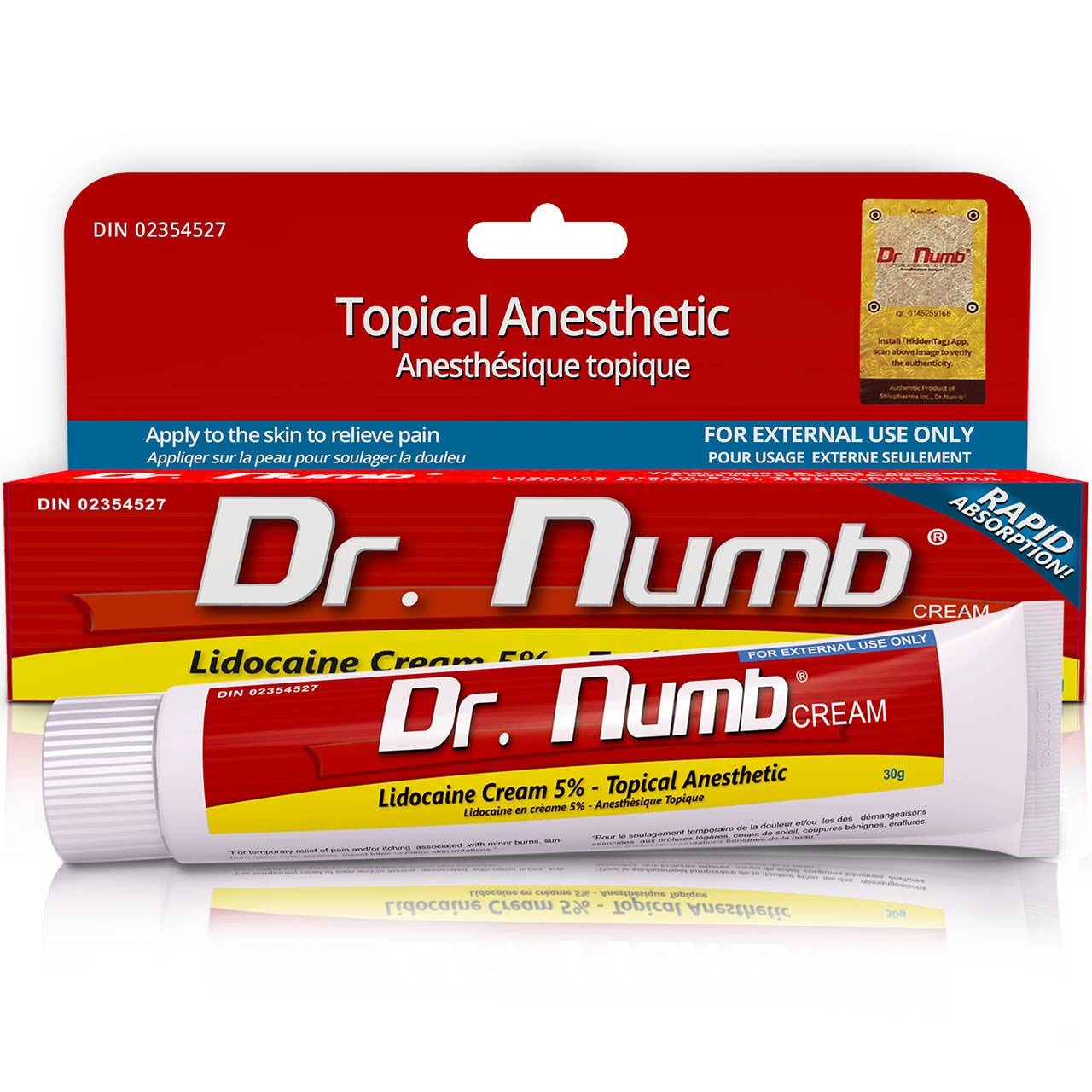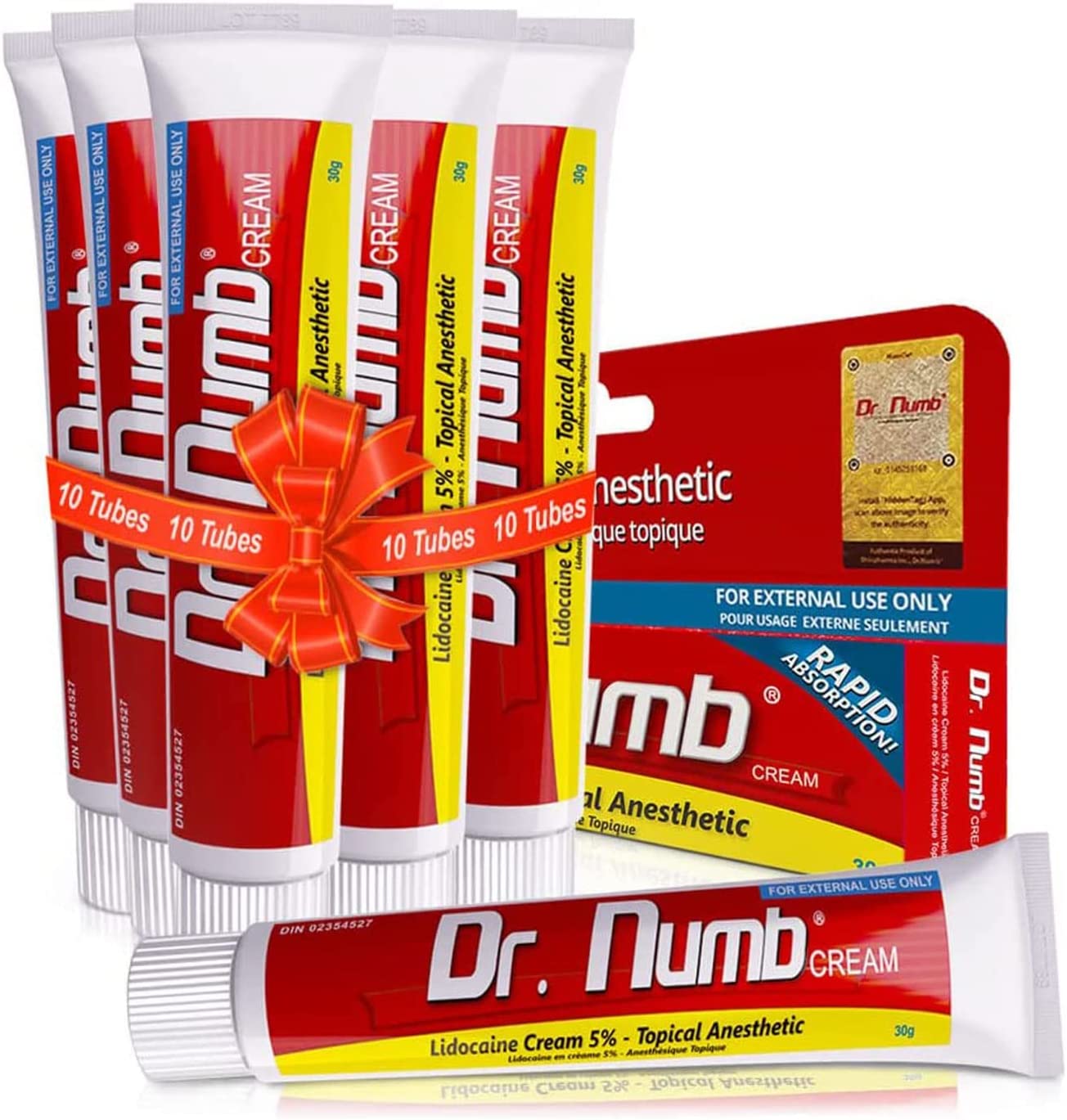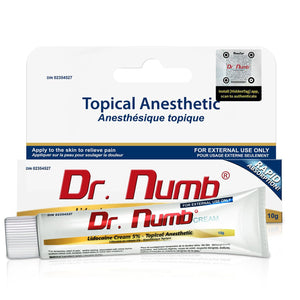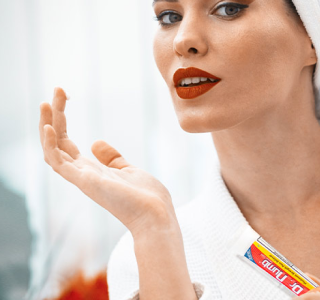Home piercing can be both exciting and nerve-wracking. There is no way to pierce your nose without hurting at least a little. Try numbing agent for the pain, but wipe it clean once it has subsided.
With the right preparation, equipment, and aftercare, you too can achieve the piercing of your dreams. It's important to note that risks are involved, such as infections and scarring, so be cautious and thorough in the process.
In this blog post, we will provide you with all the information you need to know about nose piercing pain, its possible causes, and precautions to take to avoid it. We will also outline some practical steps to alleviate pain and prevent infection.
How to Pierce Your Nose at Home without Pain: 5 Factors [Preparation & Process]

Let's discover the secrets to safely piercing your nose at home with minimal discomfort. Learn about essential factors to consider, effective preparation techniques, and step-by-step processes to achieve your desired look confidently. Piercing your nose at home has always been challenging.
Factors to Consider Before Piercing Your Nose
We'll delve into each factor before piercing your nose at home. By following these guidelines, you can ensure that your nose-shooting experience is safe and comfortable.
The Anatomy of the Nose
The nose is a complex body with multiple cartilages, nerves, and blood vessels. When piercing your nose at home, it's essential to understand the anatomy of the nose to avoid damaging these structures. Here are some critical points to keep in mind:
- The cartilage in the center of your nose is known as the nasal septum. Piercing this area can cause significant pain because it has a lot of nerve endings.
- The lower part of the nose is fleshy and houses the delicate nerves and blood vessels of the nostrils. Piercing this area can result in excessive bleeding or infections.
- The outer rim of the nostril is usually safe for piercing because it doesn't contain many nerve endings or blood vessels.
Assessing Your Pain Tolerance
Piercing can be painful, and pain tolerance varies from person to person. If you plan on piercing your nose at home, assess your pain tolerance to determine whether you can handle the discomfort. Here are some tips to ensure that you can tolerate the pain:
- Take over-the-counter pain medications before piercing to numb the area.
- Use numbing creams to reduce pain.
- Relax and minimize pain by practicing meditation or deep breathing.

Right Jewelry for Piercings
Choosing the right jewelry can significantly impact the success of your nose piercing. The right jewelry will fit properly and be made of safe materials that don't irritate your skin. Here are some things to consider when selecting nose-piercing jewelry:
- Choose high-quality jewelry made of titanium, surgical steel, or gold.
- Avoid using cheap jewelry, usually made of nickel, and can cause allergic reactions.
- Ensure that your jewelry fits well to prevent irritation or complications.
Allergies or Medical Conditions
Before piercing your nose, you must check for any allergies or medical conditions that could complicate the process. Allergic reactions to jewelry or medical conditions such as diabetes or blood disorders can increase infection risk and slow healing. Consider these factors:
- Get tested for metal allergies before piercing.
- Consult a doctor if you have medical conditions that can affect your piercing.
Stay Infection-Free
Infection is one of the most significant risks associated with nose piercing. Avoiding diseases, such as maintaining proper hygiene and care, is essential. Here are some tips to help prevent infections:
- Before touching the piercing, wash your hands thoroughly.
- Clean the piercing daily with saline solution or mild soap.
- Avoid touching the piercing with dirty hands.
- Never swim or submerge the piercing until it's fully healed.
Nose Piercing at Home without Pain: Preparation

You will be instructed here on how to prepare for your nose piercing.
Visualize Your Piercing
You should know precisely where you want your piercing on your nose before you begin. You should visualize your piercing and determine the precise location of the puncture to ensure that the jewelry sits in the correct place. When imagining your piercing, consider the following factors:
- The size and shape of your nose: Different nose shapes require different piercing locations. You should visualize your nose to determine the best spot for a piercing. For example, a septum piercing may look good on some people but not others.
- Your lifestyle: Consider how your lifestyle and career may affect your piercing. If you work in an environment that frowns upon visible piercings, you should position your piercing in a more discrete location.
- Jewelry preferences: Think about the type of jewelry you want to wear and the piercing needle gauge. A larger needle size may be required depending on your jewelry choice.
Purchase the Necessary Supplies
Once you have imagined your piercing and chosen the perfect spot, it is time to gather all the necessary equipment and supplies for your DIY nose piercing. You will need the following:
- A sterilized piercing needle: Do not reuse needles or use unsterilized hands always buy brand-new sterile needles for piercing.
- Jewelry: Choose your jewelry type, studs, rings, or hoops and gauge size based on the needle size used.
- Gloves: Use sterile gloves to minimize the risk of infections.
- Cleaning solution: You can purchase ready-made piercing aftercare products or use a saline solution to cleanse the piercing region.
- A marker: Use a disposable surgical skin marker to mark where you want the puncture.

Sterilize Your Equipment
Before starting the piercing process, it is essential to sterilize all the equipment to prevent infections. The following steps will ensure your equipment is sterilized:
- Wash your hands and wear sterile gloves.
- Remove and open the sterilized needle and jewelry using disinfected tongs.
- Sterilize the needle and jewelry using a sterilizing solution according to instructions.
- Dry the hand and jewelry using a sterile towel.
Mark the Location of the Piercing
Mark the location of the puncture before you begin the piercing. Using a surgical skin marker will help you remain precise and avoid mistakes. Mark the location accurately by following these steps:
- Use a surgical skin marker to observe it.
- Ensure that your marks are symmetrical.
- Double-check the placement of the sport before proceeding.
Wait for Clear Skin
Before getting pierced, wait until your skin is free of blemishes, infections, or rashes. Infection can occur after hitting due to any skin condition. You may need to wait a few days to a few weeks for this to happen, depending on your skin type and condition. To prevent skin inflammation during this time, practice proper skin care and maintain good hygiene.
Pierce Your Nose without Pain at Home: Step-by-Step Process

We will guide you through methods of piercing the nose at home without pain, ensuring that you are fully informed and equipped to make a thriving nose piercing.
Gather Your Supplies
Before piercing your nose, ensure you have the necessary supplies and equipment. These include:
- A piercing clamp: This specialized tool will hold your nose in place for more accessible and precise piercing.
- A sterilized needle: Sterilized needles prevent infections and other complications.
- Jewelry of your choice:
Prepare Your Nose
Once you have all your supplies, preparing your nose for piercing is crucial. The following steps will ensure a safe and comfortable piercing:
- Cleanse your nose thoroughly with mild soap and water.
- Use a cotton ball to sterilize the area around your nose with rubbing alcohol.
- Mark the spot where you want to pierce using a surgical pen or a body-safe marker.
Use a Piercing Clamp
Use the piercing clamp to hold your nose steady and in place. This will help ensure the needle goes through the right spot and reduce the risk of painful stabbings or uneven piercings. Follow these steps:
- Place the clamp on the site you marked earlier.
- Tighten the clamp gently until it holds the area tightly.
- Ensure that the clamp is in the correct position.

Maintain a Calm and Steady Hand
Maintaining a calm and steady hand is crucial for a safe and comfortable nose piercing. It's natural to be nervous, but you must remain clear and focused.
- Breathe deeply and exhale slowly before piercing.
- Hold the needle steadily and insert it straight through the marked spot.
Use a Sterilized Needle to Pierce
The use of a sterilized needle is crucial to prevent the risk of infections and other complications. To ensure a successful and safe nose piercing:
- Hold the hand at a 90-degree angle to the skin.
- Insert the needle smoothly and quickly through the marked spot.
- Once through, leave the needle tip in place and remove the clamp carefully.
Insert Your Chosen Jewelry Immediately
After piercing, inserting your chosen jewelry immediately is essential to prevent the hole from closing. You can ensure a comfortable and safe piercing by following these steps:
- Thread the jewelry through the tip of the needle.
- Carefully pull the hand out, leaving the jewelry in place.
- Gently twist and adjust the jewelry to ensure it sits comfortably in the piercing.
Home Nose Piercing with No Pain: Tips for Safe Aftercare

We will discuss the necessary aftercare for your nose piercing, including cleaning, avoiding touching the piercing, treating signs of infection, and waiting before removing the jewelry.
Clean the Piercing Twice a Day
One of the most critical steps in aftercare is cleaning your nose piercing. Cleaning helps prevent infection and promotes healing. Here are the steps to follow when cleaning your nose piercing:
- Make sure you thoroughly wash your hands before touching your piercing.
- Gently clean around the piercing with a saline solution or a mild antibacterial soap.
- Use a cotton swab or pad to clean the piercing, ensuring to get in all the crevices.
- Rinse the piercing thoroughly with clean, warm water.
- You can let it air dry or pat it dry with a clean towel.
Avoid Touching the Piercing
One of the most common mistakes people make after getting a nose piercing is touching the piercing. Touching the piercing can introduce bacteria that can lead to infection. It can cause piercing trauma, leading to prolonged healing and scarring. Here are some tips to avoid touching your piercing:
- Keep your hands away from your nose, especially during recovery.
- Keep the jewelry the same frequently.
- Only touch the piercing when you need to clean it.
- Be gentle when washing or drying the piercing.

Treat Signs of Infection
Infections can still occur despite your best efforts. Conditions must be treated promptly to avoid complications. Symptoms of an infected nose piercing include:
- Swelling, redness, or warmth around the piercing.
- Pain or tenderness.
- Discharge or pus coming from the piercing.
- A foul smell coming from the piercing.
- Fever or chills.
You should see a healthcare professional immediately if you experience these symptoms. They may prescribe antibiotics to clear the infection.
Remove Jewelry Slowly
It is essential to avoid removing the jewelry too soon, as doing so can cause the piercing to close up. Even after healing, keeping the jewelry in place for at least a few months is best to allow the piercing to settle fully. Here are some tips for removing nose-piercing jewelry:
- Be sure to remove jewelry once the piercing has fully healed.
- Always wash your hands before removing the jewelry.
- Use proper tools, such as pliers, to gently remove the jewelry.
- Be gentle when removing the jewelry to avoid trauma to the piercing.
Nose Piercing at Home without Pain: Benefits

Piercing your nose can have several advantages, some of which are mentioned below:
Cost-effective
A professional studio can charge anywhere from $50 to several hundred dollars to pierce your nose. By hitting your nose at home, you can save a lot of money and use the extra cash for something else.
Convenience
When you pierce your nose, you have complete control over the process and can do it conveniently. You don't have to worry about making appointments or traveling to a studio.
Safety
Piercing your nose at a professional studio can be safe, provided they follow safe and hygienic practices. There is still a risk of infection or injury. Hitting your nose at home can ensure you use clean and sterile equipment, reducing the risk of diseases.
Personalization
You can personalize your jewelry with a nose piercing to match your style and taste. You can choose from studs, rings, and gemstones to make your nose piercing unique.
Empowerment
Piercing your nose can be a fulfilling experience, as it can increase your self-confidence and self-esteem. It is a way to control your body and express your individuality.
The Risks of Piercing Your Nose at Home

Considering the potential risks of self-piercing before proceeding with the procedure is crucial. Here are some significant risks associated with piercing your nose:
Infection
Risks associated with self-piercing your nose is the possibility of infection. When you pierce your skin, the body's natural defense mechanism is to form scar tissue to close the hole. If this is done incorrectly, the gap may not close properly, leaving room for bacteria to enter, causing an infection.
Bleeding
Another risk of self-piercing your nose is excessive bleeding. Getting the piercing right without the proper tools or knowledge can be challenging. This can lead to bleeding that becomes difficult to stop, and some may need to go to the hospital for an expert's attention.
Nerve Damage
The nose is a complex part of the face with many nerve endings. Even if you think you know the right spot to pierce, there is still a chance you may end up damaging a nerve and causing yourself harm or even paralysis.

Allergies and Reactions
The materials you use on the piercing may cause allergic reactions. Piercing a one-size-fits-all ring or stud, especially not made from hypoallergenic materials, is risky and may cause swelling or rashes.
Conclusion
As you can see, nose piercing at home can be relatively easy and affordable. You should never forget that risks are involved. Your safety should always come first. If you are not confident in your ability to pierce your nose safely, it is always best to seek professional help.
Your health and well-being are paramount, so take precautions to ensure a successful piercing experience. This post will provide valuable information on whether you pierce your nose at home.
















![The Recovery Time and Stages of Nipple Piercings [Best Practices]](http://drnumb.ca/cdn/shop/articles/How_Long_Do_Nipple_Piercings_Take_To_Heal__3_Stages_Explained.jpg?v=1714373243)

